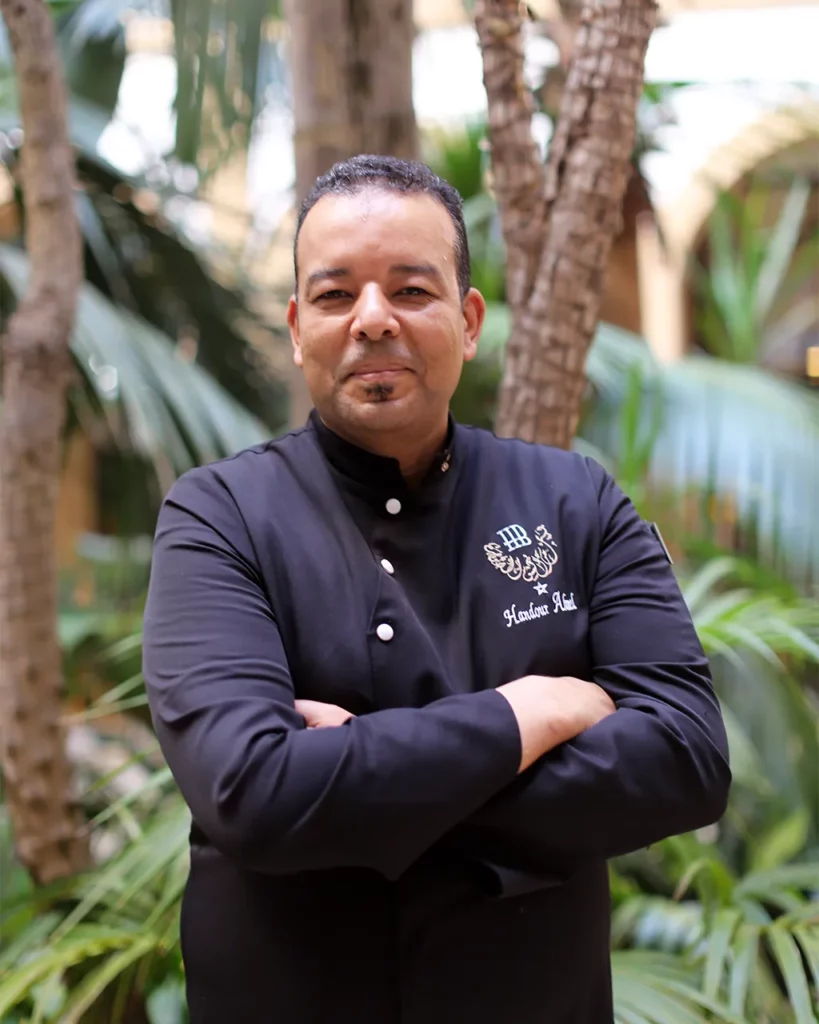Heure Bleue’s Traditional Harira

Originating from North Africa’s Maghreb cuisine, harira is a traditional tomato-based soup with chickpeas and lentils typically served to break the daily fast during Ramadan.
Several years ago, Heure Bleue welcomed me into its oasis. Nestled next to the medina’s eastern gate in the port city of Essaouira on Morocco’s Atlantic coast, the luxury boutique hotel’s colonial-meets-traditional-Moroccan interior boasts an impressive collection of calming green foliage. It was the perfect place to warm my weary bones and stave off the howling Atlantic winds.
Opting for a low-key and cosy night at the hotel, I ordered room service and what ended up being the perfect comfort food to settle in for the evening: traditional harira, a tomato-based soup with chickpeas and lentils. My soup arrived in a porcelain tureen, sized to feed a family of six.
Satisfying and nourishing, harira is typically served to break the daily fast during the month of Ramadan, when no food or drink is consumed from dawn to dusk. Its origins lie in the Maghreb cuisine of North Africa, typically characterised by spiced dishes using staple ingredients like couscous, seafood, lamb, dates, almonds and olives. The Indigenous people of the Maghreb region are known as Berbers (or Amazigh as they prefer to be called), and it is believed that they have inhabited North Africa for thousands of years.
While it’s unclear how harira came to be a Moroccan staple, today, it culturally and religiously symbolises the unification of Muslims during Ramadan – a collective act where friends and family fast and come together to eat. The sensory experience commences a few hours before breaking fast with the sounds of whistling pressure cookers and a tangy scent wafting through the air.
The wildly popular soup has different variations depending on the region or familial recipe. It can be found throughout Morocco during the winter months, whether in homes and restaurants or as street food, though during Ramadan, it inherits its more meaningful purpose. You’ll find harira accompanied by dates, hard-boiled eggs and traditional chebakia (a rose-shaped, deep-fried pastry coated with honey and orange blossom syrup and sprinkled with sesame seeds).
Recently, I returned to Morocco and made a beeline for Essaouira to get another taste of the mouth-watering soup. Heure Bleue’s head chef Ahmed Handour welcomed me, ushering me into the kitchen where he swiftly chopped onions without shedding a tear and reminded me to soak the chickpeas the night before. Known for adding a modern element to Moroccan cuisine and paying tribute to local products, Handour told me he learned to make harira in the kitchen with his mother, along with many other traditional Moroccan dishes.
As a child, there were days Handour was so hungry after fasting for Ramadan, he would slurp up two to three bowls of his mother’s warm and comforting harira. As I watched, he went on to sprinkle freshly chopped celery, coriander and parsley into the soup, while telling me that “cooking is passion, and the kitchen is a universal language”. When he isn’t in the kitchen feeding guests, he’s teaching them how to cook traditional Moroccan recipes through culinary classes at the hotel, adding his own modern spin on harira.
The name harira stems from the term harir, which is the Arabic word for silk, describing its velvety texture after being thickened with eggs or a mixture of flour and water. In fact, that’s exactly how Handour’s harira felt. His version of this tomato-based goodness is filled with chickpeas, lentils and aromatic spices and herbs that envelop you like a soft piece of velvet, warming you from the inside out.

Source : BBC





